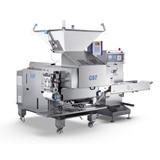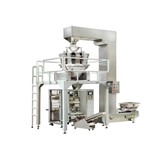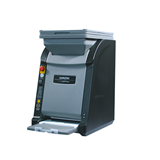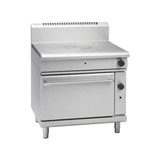Cloud kitchens are booming — but what’s the impact on your dine-in restaurant or café? Learn how to adapt, compete, and grow in Australia’s evolving foodservice landscape.
Key takeaways
- Cloud kitchens are growing fast – The Australian cloud kitchen market is projected to grow at over 13% annually through 2027, reshaping how food is prepared and delivered.
- Lower overheads give them an edge – With no front-of-house staff, rent, or large fitout costs, cloud kitchens significantly reduce operating expenses.
- Consumer habits are shifting – Nearly 70% of Australians now use food delivery apps monthly, favouring speed and convenience over dine-in experiences.
- Traditional venues must adapt – To compete, bricks-and-mortar restaurants must re-evaluate menu design, delivery partnerships, and cost structures.
- Hybrid models offer opportunity – Many Aussie operators are blending dine-in with delivery-only arms to expand reach without major new investment.
- Local compliance still applies – Even without a storefront, cloud kitchens in Australia must meet food safety laws, zoning rules, and delivery platform standards.
Introduction
The rise of cloud kitchens, delivery-only food operations with no dine-in facilities, has reshaped Australia’s foodservice landscape. Whether you run a restaurant, café, or commercial kitchen, understanding how this model affects your customer base, margins, and operational strategy is no longer optional. This guide breaks down the key impacts and opportunities cloud kitchens present for traditional venues across Australia.
What is a cloud kitchen?
Cloud kitchens (also known as ghost or virtual kitchens) are commercial food prep facilities built for delivery fulfilment. Unlike traditional restaurants, they don’t have customer-facing operations. They often operate:
- As centralised hubs for multiple virtual food brands
- In industrial or low-rent urban areas to cut overheads
- Entirely through food delivery apps
Some models also house several brands under one roof, allowing one operator to test multiple cuisines without the cost of physical expansion.
Why cloud kitchens are booming in Australia
Several forces are fuelling the growth of cloud kitchens nationally:
- Lower operating costs: No front-of-house staff, minimal rent, and scalable kitchen models
- Shifting consumer behaviour: In 2024, over $2.1 billion was spent on food delivery in Australia (Statista, 2025)
- Post-COVID expectations: Diners now expect restaurants to have a robust delivery presence
- Platform expansion: Third-party delivery platforms have introduced incentive models for cloud-only partners, giving them an edge in app rankings
Cloud kitchens are no longer just for startups, they’re attracting established brands and franchise operators looking to pilot new menus or expand into new markets.
How cloud kitchens impact traditional venues
If you operate a dine-in venue, cloud kitchens may be changing your business more than you think:
Revenue pressure
- As delivery-first brands gain popularity, you may lose share to competitors with lower overheads and more aggressive pricing.
- Average dine-in order sizes are shrinking, especially during lunch and mid-week service.
Visibility challenges
- Cloud kitchens often dominate search and filter results in delivery apps thanks to algorithmic boosting and higher commission rates.
- Without online optimisation, your venue may be buried behind dozens of virtual brands.
Margin compression
- Offering delivery through third-party platforms can cost up to 30–35% per order in commissions, squeezing profitability unless restructured.
Which traditional venues and cuisines are most impacted by cloud kitchens
Cloud kitchens don’t affect all venues equally. Some traditional food businesses, especially those in high-competition, delivery-friendly segments, are feeling the impact more acutely than others.
1. Quick-service restaurants (QSRs)
QSRs that rely heavily on takeaway and delivery, like burger joints, fried chicken shops, and pizza outlets, are directly in the firing line. Why?
- Cloud kitchens can replicate fast-food menus at lower cost, often undercutting traditional QSRs on price.
- With multiple virtual brands operating from a single facility, customers see more variety and newer options than traditional chains can rotate.
Example: Over 60% of virtual brands in Sydney's cloud kitchen hubs operate in the burger, pizza or chicken category.
2. Suburban cafés and bistros
Neighbourhood cafés that once relied on local foot traffic are seeing a shift as younger consumers turn to delivery.
- Cloud kitchens have no location disadvantage, meaning a virtual brunch brand can compete with your café, even without ever opening on your street.
- These venues are especially vulnerable if their menus aren’t optimised for travel or if they lack delivery platform visibility.
3. Ethnic takeaway restaurants
Traditional family-run Thai, Indian, or Chinese takeaways, particularly those without strong digital presences, are losing market share.
- Cloud kitchens often launch copycat versions of popular dishes using SEO-optimised names like “Bangkok Street Noodles” or “Butter Chicken Express”.
- Without a strong brand identity, legacy operators risk being crowded out on delivery apps.
4. Inner-city casual dining
Venues located in high-rent CBD strips with a focus on lunch trade are feeling the pinch as:
- Remote and hybrid work reduce daytime foot traffic
- Consumers opt for cheaper delivery alternatives instead of eating in
5. Late-night eateries
Cloud kitchens thrive on late-night orders, especially in the burger, loaded fries, and dessert categories. Traditional late-night venues now compete with delivery-only operators who don’t have to staff a front-of-house past midnight.
Cuisines most disrupted
The following cuisine types have seen a surge in virtual brand competition across Australia’s metro hubs:
- Burgers & Fried Chicken – high volume, easy delivery, low barriers to entry
- Asian Fusion & Street Food – especially noodle bowls, dumplings, and rice boxes
- Mexican & Tex-Mex – burritos and tacos translate well to delivery
- Desserts & Bubble Tea – cloud operators are creating dessert-only menus that target high-margin late-night orders
Regulatory blind spots and risk
The rapid rise in cloud kitchen activity has prompted scrutiny from councils and regulators:
- In 2024, NSW Health and local councils identified 131 unregistered cloud kitchens operating in the greater Sydney region, often without proper food safety compliance.
- Unlike traditional venues, cloud kitchens are often located in non-retail zones, which may breach local planning regulations.
- Waste management, noise control, and shared tenancy rules are often unclear or poorly enforced.
If you’re considering launching a virtual brand from your existing premises, check whether your zoning allows for multi-brand operations or third-party food prep.
How traditional venues can adapt
Rather than competing head-on with cloud kitchens, many venues are evolving to leverage the model’s benefits.
1. Launch your own virtual brand
- Create a delivery-only brand using your existing kitchen capacity during off-peak times
- Popular among cafés and bistros wanting to expand without rebranding their dine-in identity
2. Optimise your delivery menu
- Rework your menu for portability, prep speed, and reduced waste
- Identify high-margin items that travel well and package them professionally
3. Partner strategically with platforms
- Negotiate better commissions or join “Preferred Partner” programs for increased visibility
- Use promotional tools like “Buy 1 Get 1” or loyalty perks to drive app orders
4. Upgrade your kitchen for hybrid efficiency
- Consider a back-of-house redesign to separate dine-in and delivery workflows
- Introduce smart kitchen tech to manage order flow, reduce wait times, and streamline prep
5. Double down on in-person experience
- Invest in atmosphere, service and storytelling that cloud kitchens can’t replicate
- Use your venue for experiences: chef’s tables, events, or exclusive menu drops
Key buying and investment criteria to consider
Whether you're considering launching a virtual brand or competing harder in the delivery space, consider:
- Kitchen throughput: Can your kitchen handle extra delivery volume without affecting dine-in service?
- Packaging cost: Budget $0.80–$2.00 per delivery for quality packaging.
- Commission models: Review each delivery platform’s fee structure—some offer reduced rates for exclusivity.
- Technology stack: Consider POS systems that integrate with delivery platforms, streamline orders, and provide analytics.
- Marketing spend: Factor in spend on digital ads, reviews management, and loyalty offers to boost delivery volume.
The future: Coexistence, not competition
Cloud kitchens are here to stay, but they don’t spell the end of dine-in restaurants. What’s emerging in Australia is a hybrid food economy, where physical and digital formats coexist:
- Dark kitchen hubs in Melbourne and Sydney are now leasing spaces to established venues expanding online
- Aggregator-owned ghost kitchens, like those run by Uber Eats or DoorDash Kitchens, are offering lease options to vetted restaurant brands
- New licensing and safety frameworks are expected from NSW and VIC regulators in 2025–2026, likely creating clearer rules for multi-brand operations
Final thoughts
Cloud kitchens may be reshaping the competitive landscape, but they’re not replacing traditional venues. Instead, they’re creating new ways to engage with your customers, unlock off-peak revenue, and test new formats. For operators who stay nimble, the future of food in Australia is not a binary of dine-in vs. delivery, it’s both.



-160x160-state_article-rel-cat.png)





-160x160-state_article-rel-cat.png)


-160x160-state_article-rel-cat.png)














